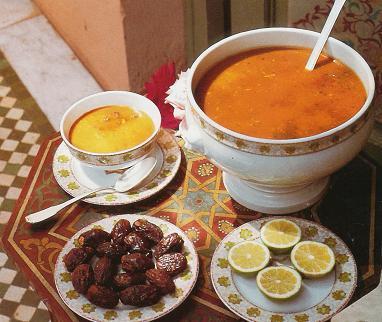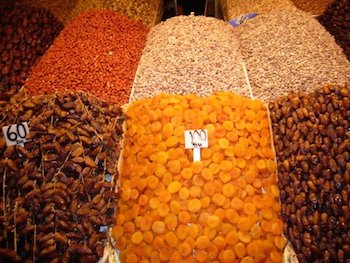Posts Tagged ‘Moroccan Cuisine’
Harira – The Traditional Moroccan Soup
As both a starting point and a destination for merchants along ancient trade routes Morocco developed a cuisine that has Arabic, African, French, Mediterranean, and Middle Eastern influences. This blending of cultures and ideas makes Moroccan cuisine unique and often quite surprising. Extensive use of dried fruits such as dates…
A History Tour of Moroccan Dates, 45 Varities & Recipes
Dates have played an important part in Moroccan cuisine for thousands of years. Archaeological evidence suggests the cultivation of dates all the way back in 6,000 BC in Arabia. The date palm was a major source of life for thousands…
Bizarre Foods Morocco, Andrew Zimmern in Marrakech
If it looks good eat it! Check out chef, food critic and die hard foodie the best way to experience a culture is to dig a little deeper for your dinner no matter where you will find it. A full plate of North African specialties in the North African Country…




